How Food Companies Struggle to Satisfy Our Hunger for Farm-Fresh Food
Running a company that is committed to sustainable sourcing of local food is not easy. You cannot just pick up the phone and call one of the established commodity food suppliers like everyone else does. You need to start with the farmers.
And farmers are notoriously difficult to find. Busy multitasking on a hundred different things related to soil, seeds, machinery, and plants, many small farmers do not have time for marketing.
Buyers have to do a lot of legwork to add a new farm to their supply rosters. Does the farmer grow what they need using farming practices they approve of? The crop may not be of a large enough quantity, or it may already be promised to someone else. How will they get the product from the Hudson Valley, Long Island, or from deeper in the New York regional food shed? Finally, how will buyers ensure for their customers that the lettuce is safe to eat?
These are the challenges produce buyers for meal-kit delivery service Blue Apron, New York-based farm-to-counter chain Dig Inn, and New York’s first local food hub Greenmarket Co., and many others like them, deal with on a daily basis.
These buyers work for businesses that promise to serve as much ethically sourced food as possible—before an established food chain for this exists. Nearly all the farms these buyers deal with are tiny compared to the commercial factory operations that produce the overwhelming majority of our potatoes and carrots.
Chipotle was one of the first such companies to experience skyrocketing growth with a business model based on sustainable food sourcing. In the last five years or so, countless restaurants, fast-casual chains, online food hubs, meal delivery services, and small-batch artisan brands have emerged that espouse the same or similar values.
Today’s consumer preferences are shifting quickly. We want local, nutrient-dense food, without any commercial pesticides, herbicides, and fungicides, and so we flock to these new businesses, driving double-digit yearly growth in the organic food industry, according to the USDA, while the rest of the food industry languishes.
However, consumer demand for good food is outstripping supply.
Sustainably grown food accounts for just 3.1 percent of the fruits and vegetables sold in the United States. It is a fast-growing $12 billion sliver within a very well established market worth a whopping $390 billion.
An immature supply chain infrastructure is an impediment to growth for emerging food companies that rely on sustainably grown food, and so a helpful kind of interdependence has arisen, whereby the buyers are very involved in helping the farmers.
It’s a win-win for the businesses involved. It’s also a win for the environment, and regional food security. You could say these relationships are growing organically in fields throughout the country.
Conversations
Adam Eskin, CEO of fast-casual chain Dig Inn, with 11 locations in New York City, said in an interview that the company takes the approach of getting to know the farmers.
Dig Inn works with 35–40 farms varying in size from as small as 10 acres to as large as 500 acres, according to Matthew Preston, Dig Inn’s farm buyer, who spoke at a recent Food+Enterprise event in New York. Last year, Dig Inn purchased 143,000 pounds of local kale, 170,000 pounds of Brussels sprouts, and 137,000 pounds of cauliflower.
For all buyers interviewed for this article, transparency is a key goal.
Conversations revolve around how the farmer takes care of the soil, whether he or she practices crop rotation and companion planting, responsible water use, and techniques like integrated pest management that eliminate or at least keep pesticide use to a minimum.
Conversations built on trust and personal relationships go a long way in local supply chains to bring transparency to the end consumer.
Brian Goldblatt with Greenmarket Co. said his ability to get details from a farmer about a particular crop of broccoli helped make the sale to a choosy customer.
In addition to conversations, Blue Apron uses a supplier agreement with its farm suppliers. The agreement is somewhat controversial for requiring that farmers do not supply any of Blue Apron’s meal-kit delivery competitors. But Beth Forster, senior national farm sourcing manager at Blue Apron, said the farmers are helped and protected by it.
Farmers receive a preseason purchase price and detailed science-based data from Blue Apron’s in-house team, like how many seeds to plant and when, so the product is ready when Blue Apron needs it for its menus.
Blue Apron has bought over a million pounds of specialty crops, according to a recent press release. The company sells over 3 million meal kits a month nationwide and works with about 150 farmers, according to the press release and Forster.
“It feels like a marriage. I talk more with farmers than with my husband,” said Forster, speaking at the Food+Enterprise event.
Growing Pains
Small farmers tend to have it pretty rough, working 16-hour backbreaking days for the promise of only tiny margins. Sustainable farming practices are notorious for requiring more labor than conventional methods.
Most are not in a position to invest in expensive equipment needed to upgrade their operations, and so they struggle to meet buyers’ demands.
Most of the buyers interviewed for this article, at the very least, handled the logistics of picking up produce from the farmers’ fields.
Some buyers also handle post-harvest processing—chopping, washing, and testing for microbial safety of fresh food—something that is done on-site at most large farms.
To meet this particular challenge, Dig Inn has its own 12,000-square-foot facility at New York’s food distribution hub, Hunts Point, where it washes, processes, and refrigerates produce.
Goldblatt said that if more farmers could sell their greens in packages, “we could sell a ton of it.” Since Greenmarket Co. operates as a nonprofit, Goldblatt said he is limited in what he can do.
The nonprofit does have plans for a new 200,000-square-foot facility in the Bronx, where it can be a resource. It hopes to be able to rent out cooler space and function as a drop-off and pickup point for farmers, but government funding for the project is currently tied up.
Satur Farms, which sells greens to Whole Foods year-round, has invested smartly and managed to position itself well in the market, but co-founder Paulette Satur told the Epoch Times that equipment costs were some of its largest challenges as the farm grew, despite the growing demand.
Goldblatt praised the farm’s efforts in an interview with the Epoch Times.
Satur and her husband, chef Eberhard Müller, started the 250-acre farm in the fertile North Fork of Long Island almost 20 years ago with the idea of supplying vegetables to Müller’s restaurant.
Chefs used to account for 90 percent of Satur’s business, long before the general public caught on to the great flavor of sustainably grown food.
Satur said in an interview that it was a major turning point for the business when they were able to afford to invest in refrigeration to store fresh produce. Even so, a vacuum cooler, which was the cost of a small house in middle America, was also needed to “take the field heat out of the greens.”
Satur also made the decision about six years ago to farm in Florida in the winter in order to offer her workers year-round employment and retain their expertise—expertise about everything, but especially the small things, like how deep to plant which seeds and how far apart to space them for optimal growth. “There are so many little things, and you need to have a sense for it,” she said.
Steps to Scale
As one of the larger regional growers, Satur is in a pretty good position now. The farm’s produce is available for a diverse set of buyers, large and small.
Baldor Specialty Foods is one of the large buyers. The company, established in 1946 in Greenwich Village as a fruit stand, is today a mainstay of many of the finest New York restaurants and caterers.
Its business is part of the well-developed conventional food system, but it too is in the process of stepping up its local food sourcing, according to Ben Walker, Baldor’s director of marketing and business development.
Walker said that what Baldor can do is offer farmers economies of scale.
The distributor has seen its local food business double in the last two years, and it expects it to double again this year to more than 25 percent of sales during the growing season, said Walker.
To help sell more local items, Baldor is offering its customers a Buy Local Pledge to make it easy for them to buy local. Those who sign up can ensure they get a local beefsteak tomato, for example, even if they used a commodity code to order, as long as the price difference is within 10 percent. Having just launched recently in April, the program already has 100 restaurants signed up.
Walker said Baldor is doing its part to empower the regional food system. He said “farmers eyes light up when they see the program.” It helps teach them how the economics work for this business, he said, adding “that is a very powerful conversation to have.”
Food Safety
These days, food safety is a challenge both buyers and sellers are thinking a lot about.
Recent illness outbreaks at fast-casual chain Chipotle, which operates 2,000 U.S. restaurants, raised public awareness about the importance of food safety in the local supply chain.
The E. coli outbreak was particularly troubling, because Chipotle largely credits its commitment to antibiotic-free meats, non-GMO, and local sourcing for its rapid growth. In 2011, the company purchased 10 million pounds of local produce, according to a company press release.
While the source of the E. coli outbreak was never determined by health authorities, Chipotle’s local farm sourcing program received a lot of scrutiny.
A number of sources interviewed for this article said it was very unlikely the dangerous bacteria came from a local farm supplier, since the outbreak affected people in 11 states, from California to New York. Chipotle defines local as within 350 miles of a store location.
Nonetheless, Chipotle has handled the issue by imposing a set of strict food safety practices on its suppliers. In Chipotle’s rush to win back customers, many within the industry have expressed concerns that the food safety requirements may go a little bit too far.
The company’s website says it will require high-resolution testing of all fresh produce in the fields, a requirement that far exceeds federal and state agency requirements, according to the Nation’s Restaurant News.
Satur says anything could happen after testing in the field, and testing after washing and packing is enough. “Food safety is good. It makes you a better operator, but it needs to make sense,” said Satur, whose farm has enrolled in a number of strict food safety programs.
Until recently, there have been no formal food safety rules required by the federal government, and producers selling direct to consumers at farmers markets could theoretically be following no rules.
Food safety compliance has been determined at the buyer level. Usually, the larger the size of the purchaser, the greater the number of safeguards it will require.
This is changing. The Food Safety Modernization Act, signed into law in 2011, will give the federal government oversight over farms for the first time. The industry is bracing for the changes, which will take effect over the course of the next one to four years.
Buying the Farm
At Dig Inn, where restaurants serve only seasonal menus, management has decided it wants to learn about farming firsthand, on its own farm.
“It is a natural extension of what we have been building upon,” said Eskin, adding that the company is looking to purchase 50 to 100 acres in New York’s fertile Hudson Valley.
Chefs who design Dig Inn’s menu can experiment and get inspired by the experience of planting and harvesting, new chefs can train there, and Dig Inn’s farm partners can visit and learn lessons from the Dig Inn farm, and vice versa.
Eskin said it is not the plan to grow all their own food. That wouldn’t be scalable. What’s scalable is the education and the conversation that will ensue at the Dig Inn farm.
“We’ll have an impact on the food distribution chain, and use food as a tool to build community,” said Eskin.



















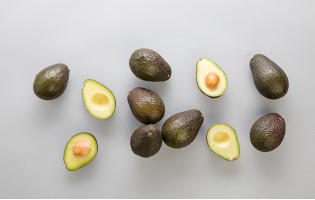




















































































































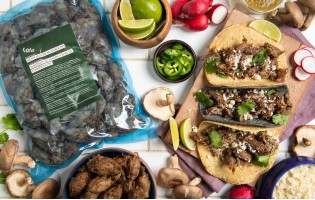


















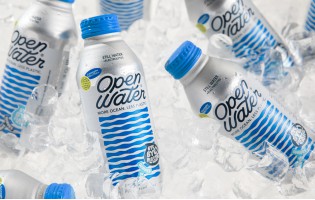

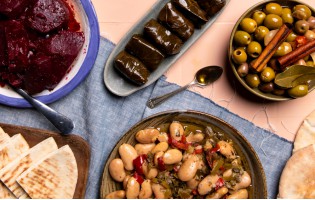






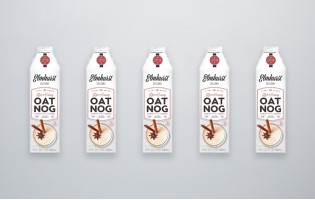





















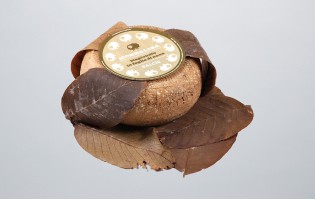































 Fruits
Fruits  Organics
Organics  Vegetables
Vegetables  Fresh Cuts
Fresh Cuts  Meat & Poultry
Meat & Poultry  Grocery
Grocery  Dairy
Dairy  Cheese
Cheese  Bakery
Bakery  Seafood
Seafood 